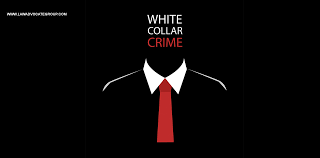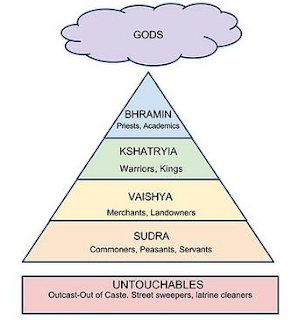IMPRESSION OF THE CRIMINAL ON SOCIETY
There is no human society
without crime and implied law, but the definition of the law has changed from
time to time and vary from place to place. In early English society i.e. 12th and
13th century only acts committed against the state or religion
were considered a crime. Thus, treason, rape, and blasphemy were treated as
crimes whereas murder was not. The payment of compensation known as ‘bot’ used
to wash away the guilt of the wrongdoer and relegated him to a position as if
he had done no wrong. There were also some bot-less offenses present in the society
that were heinous and were only punishable with death, mutilation, and forfeiture of
property by the king. Housebreaking, harboring the outlaws, refusing to serve
in the army and breach of peace, etc., were some of the early bot-less offenses
which entailed compulsory punishment under the law of the state. We can define
law as “laws are the rules which are formed to maintain the peace in the
society and laws may vary from society to society. “These are the guidelines
that are given by a government or a sovereign according to the wrong present in
that society only.
Judicial Practice and Punishments in Ancient
India: -
In India, according to Dharma
Sastra,” If anyone used to breach any prevailing law, he or she was punished
according to ordeals”. There was no
specific fair trial in ancient times, the king had the whole discretion to decide
who was criminal and who was innocent. At
the end of the trial, if a person was guilty in the eyes of the king, he or she had to
go through though the divine punishments and if they succeeded or survived those
divine punishments (ordeals) they were free from every guilt they had made.
Trial by Ordeal: - The test was one of life or death, and the proof of innocence
was survival. (Tula, Agni, Jala, Visa, and Kosa)
1. Balance (Tula):
- The accused was twice weighed on a stone or balance. If the person weighed
lighter than the previous weight, they were considered innocent; if they were
heavier the second time, they were considered guilty.
2. Fire (Agni): -
This is known as “Agnipariksha” as well. The test was one of life or death, and
the proof of innocence was survival. There were mainly four types ordeals by fire
a) Walkthrough nine circles successively with a red- hot iron - ball in hand.
b) walking over the burning fire. C) lifting up a piece of iron from boiling
oil. d) licking the red-hot iron bar with the tongue.

3. Water (Jala):
- In this, the accused was submerged in a deep and rapidly flowing river or a
well full of water. It was performed in a sufficient depth of water either
flowing or stagnant guilt or innocence of an accused was determined on the
basis of his or her survival.
4. Poison (Visa) :
- This was also used as a method of investigation. The accused was made to
eat the poison or take out a living black serpent from a pot and was monitored
for any reactions for a certain time period. If he survived harmlessly, he was
supposed to be innocent otherwise he would be deemed guilty.
5. Kosa:- This the ordeal was meant for universal application. The accused was taken to a temple. Then the priest poured water over the deity (idol) and this holy water was given to the accused of drinking. If he was guilty of false, he would at once vomit blood or some other calamity used to happen if not, he was declared innocent.
With the evolution of society, the new laws replaced or overwrite the
old laws such as an old mischief which was prevailing in the society named Sati paratha, in
which the widow was forced to sit on the burial pit over the dead body of the husband, was criminalized, when society recognized it as mischief or against
humanity.
Reasons for the crime
Every religion has made rules to decide at least some act as a sin.
But is it really true that acts done by a person are morally wrong? Many jurists have given theories in regards to how a person becomes
criminal and how does he look like. In my perspiration, the main reasons for
crimes are: -
1. Alcohol and drugs: - Since ancient times every
society has different drugs that are able to make a person high or boozed.
Alcohol triggers an aggressive response in someone who ordinarily can
squelch aggressive tendencies and in that aggression the person does something
very wrong to the other person or towards the society. People who focus on the
here and now, without thinking about the impact on the future, are more
aggressive than others when they are sober, but the effect is magnified greatly
when they're drunk," said Brad Bushman, lead author of the study and
professor of communication and psychology at Ohio State University. The main reason
for domestic violence is alcohol and drugs. The state is also responsible for
these crimes as it allows these drugs to sell.
2. Hate crime: - Humans are sentimental and if someone
does anything wrong with the loved ones or with any person, the accused have to
face consequences. Many humans do not forgive but want the accused to be
charged with hefty punishments. The hate crimes have very high intensity and gravity.
3. Habitual Offenders: - According to jurists, the
habitual offenders have at least some kind of personal traits in them. They do
not have any fear of the law, and knowledge and respect towards the laws of the
nation. They are the liability to the society and if the court set them free,
they will do more heinous offenses, for example, because of lack of pieces of evidence the court set the accused, who was rapist, free and after that, he again commits
the same crime. Habitual offenders have criminal behavior to harm a person
again and again without any fear of law.
4. Poverty: - Marcus Aurelius said, “Poverty is the
mother of crime”. The brought-up of a child makes an impact on that child. When
a child won't have anything to feed himself, he might change his personality
and do any kind of work, even if it’s a crime. Higher poverty, lower the
human capital. In his childhood, the poor child has always seen acts of
domestic violence in his house or in the neighborhood, and these acts have a major
part in the development of criminal behavior and aggression in the child as he or
she grow up.
5. White-collar Crimes: - The capitalist is the
silent criminals; their criminal acts leave an impact on the economic
conditions of a nation. They have the power of money by which they do illegal work
fearlessly, without coming out in public. They can hire criminals or can
scandalize the whole economy. After the scandals, they leave the country and
start living in another country where previous felony or acts do not have criminal
gravity. In the future, they may face some kind of punishment according to the laws
but this doesn’t stop them from committing the crime. These are crimes without
victims and crimes without criminals.

6. Unemployment and Illiteracy: - Since ancient times
there is an idiom ‘ bhuk admi se kuch bhi kara Sakti hai’, which means the
hunger force a person to do any kind of work. Whether legal or illegal. The
unemployed do any kind of job for the sake of money. An uneducated person has
more criminal traits in him because they have never learned how to become social
in society. They have to follow the orders of their master and they do not have
the ability to decide that act is offensive or not.
7. Gender Bias: - Indian society is a mostly patriarchal
society, where the head of the family is only a male (Karta). Karta has all the
authority to make decisions for his family and the female members have to
follow orders without question. The conditions of women are very merciful in society. As females have fewer rights, they have no say in the family and
have to go through multiple crimes. The Constitution says, every gender is
equal and has equal rights but the ground reality is entirely different.
8. Unsoundness: - Many offenders are clueless in
regard to the reason for the crime done. According to the Indian law people who
have an unsound mind do not have to face legal consequences of a committed crime
as the person was clueless. This law was made for the person with the unsound mind
but in real life, criminals take advantage and prove themselves of unsound minds
to walk free but as they are habitual offenders, they again commit the crime.
9. Juvenile Delinquency: - In my view, juveniles are
the victim of the offense done by them because they don’t have knowledge of whether
the act was offensive or not. According to the law, if a juvenile indulges
himself or herself in any offense, he or she is sent to a rehabilitation center, where
they meet other juvenile criminals, who then brainwashed the accused and teach how
to do more criminal offenses. The child from childhood if provided better teaching,
the juvenile crime rate will below. In my view, Juvenile delinquency only
depends on the teachings of a child.
10. Organized Crime: - These are planned crimes and
the impact of these crimes are harsh. The crimes are done in such a manner
that the original source is impossible to find. Most of the time, these crimes
are cyber crimes such as Honey-trap offense, Bank cards related offenses.

Above mentioned are the few reasons behind offenses and there are many others described in the law. In my view only time, situation and teachings play a major role in developing the behavior of the criminal. The demerits of our legal system are that if a person fails to prove his innocence he is declared offender, which is not true because not every person who is accused is the offender. The situations and time periods of the act are responsible. Judiciary should keep in mind that the accused is also the human capital of a nation and they can be treated well by humanity.
to be continued...
Written By:- Advocate S. Vashist
Edited By:- CS Diksha Soni
For Queries, Questions, and Suggestion, Email us at:-
sonuvashist68@gmail.com
ssquaressp@gmail.com


Well illustrative article on th topic put forth by learned author.....It succinctly give a brief of crimes and its historical developments since decades
ReplyDelete